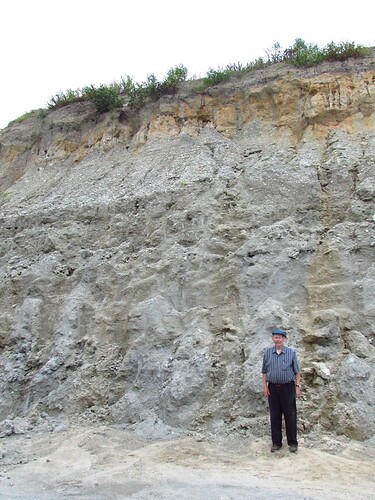Maybe, does this suffice?
Aragonite is the standard crystal structure of calcium carbonate used in making mollusk shells. However, a few groups use calcite (oysters, scallops, and a few similar groups), and a few use some of each (murexes and wentletraps). Echinoderms also mostly use calcite. Over very long periods, aragonite will turn into calcite (and into dust at the same time). Aragonite can also be replaced by larger crystals of calcite or quartz (or any number of other minerals, but calcite and quartz are the most common). Very rarely, this replacement will be sufficiently slow that the original microscopic structures in the shell are transferred to the final mineral.
Induration (turning sediment into limestone) seems to require either hundreds of thousands of years of elevated pressure, or percolating freshwater for a few centuries to millennia. If the latter, it happens from the top of a layer down. As a specific example, the SC Rock Goretown Mine has the following stratigraphy:
a few feet of oxidized, partially leached upper Waccamaw Formation (the yellower layer).
2-10 feet of upper Waccamaw Formation unconsolidated shell-sand (the sloped, paler layer).
unconformity
About 12 feet of very hard (a lot of calcite holding it together), aragonite leached Goose Creek Limestone (the more vertical, darker layer).
unconformity
Pee Dee Formation clayy limestone, which contains dinosaur bones elsewhere (about 3-4 feet below the road here).
